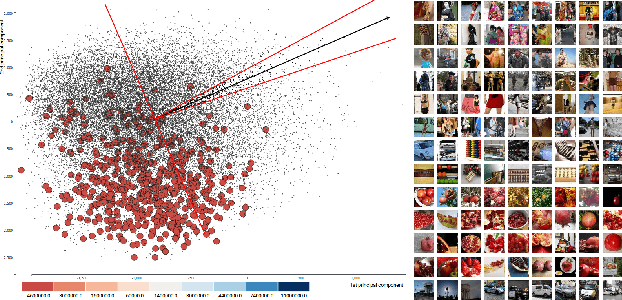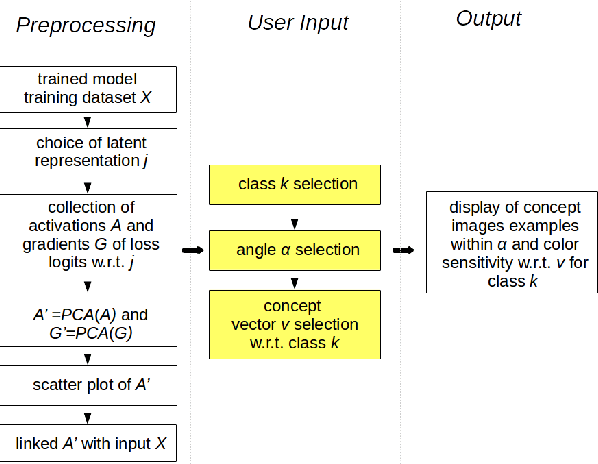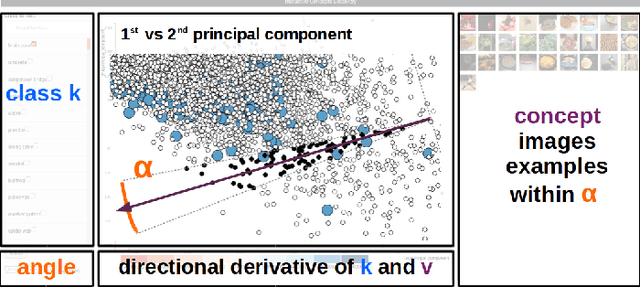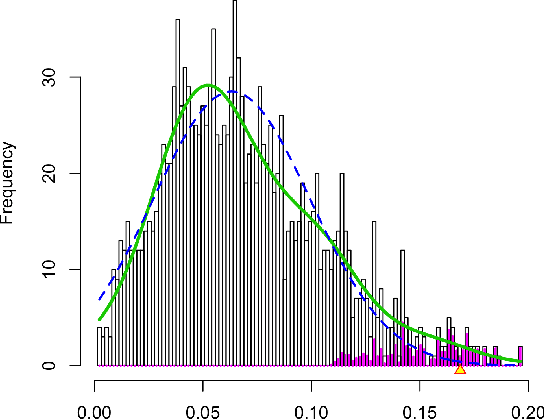Discovering Concepts in Learned Representations using Statistical Inference and Interactive Visualization
Paper and Code
Feb 09, 2022



Concept discovery is one of the open problems in the interpretability literature that is important for bridging the gap between non-deep learning experts and model end-users. Among current formulations, concepts defines them by as a direction in a learned representation space. This definition makes it possible to evaluate whether a particular concept significantly influences classification decisions for classes of interest. However, finding relevant concepts is tedious, as representation spaces are high-dimensional and hard to navigate. Current approaches include hand-crafting concept datasets and then converting them to latent space directions; alternatively, the process can be automated by clustering the latent space. In this study, we offer another two approaches to guide user discovery of meaningful concepts, one based on multiple hypothesis testing, and another on interactive visualization. We explore the potential value and limitations of these approaches through simulation experiments and an demo visual interface to real data. Overall, we find that these techniques offer a promising strategy for discovering relevant concepts in settings where users do not have predefined descriptions of them, but without completely automating the process.
 Add to Chrome
Add to Chrome Add to Firefox
Add to Firefox Add to Edge
Add to Edge